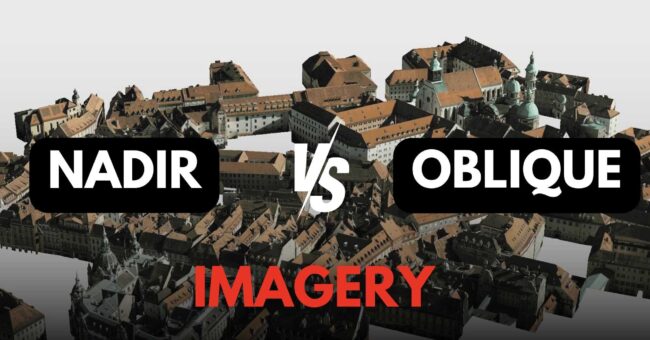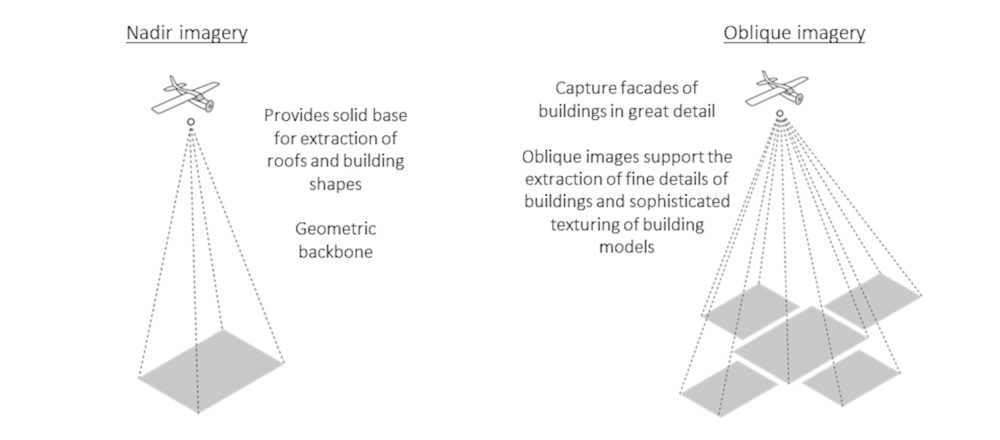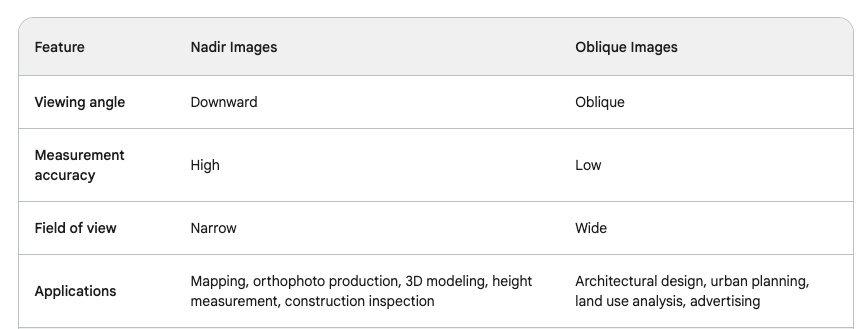



Aerial imaging is a powerful tool that can be used to capture detailed views of the Earth from above. There are two main types of aerial imaging: nadir and oblique.
Nadir images are taken with the camera pointed directly down at the ground. This provides a top-down view of the landscape, which is ideal for measuring elevation and creating accurate 3D models.

Oblique images are taken with the camera pointing at an angle to the ground. This provides a wider view of the landscape, which can be useful for identifying features and objects that would be obscured in a nadir image.

Nadir and oblique imagery are two different methods of aerial imaging that each have their own advantages and disadvantages. The best method for a particular application will depend on the specific needs of the user.